Linguistics: Hypernyms and Hyponyms

Hypernym is the basic generic label from which the self-editing writer drills down to the more specific hyponyms in this bit on Linguistics in this Grammar Explanation from KD Did It.

Hypernym is the basic generic label from which the self-editing writer drills down to the more specific hyponyms in this bit on Linguistics in this Grammar Explanation from KD Did It.
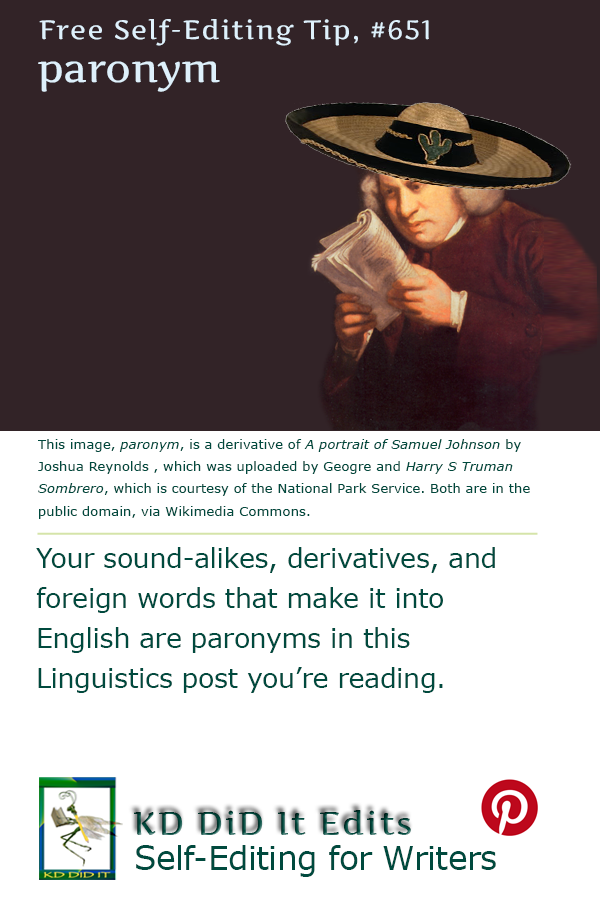
Paronyms are a hodgepodge of words evolved from Olde English and/or absorbed from another language, tweaked from the root word, or simply confused in this Linguistics post from KD Did It for the self-editing writer.
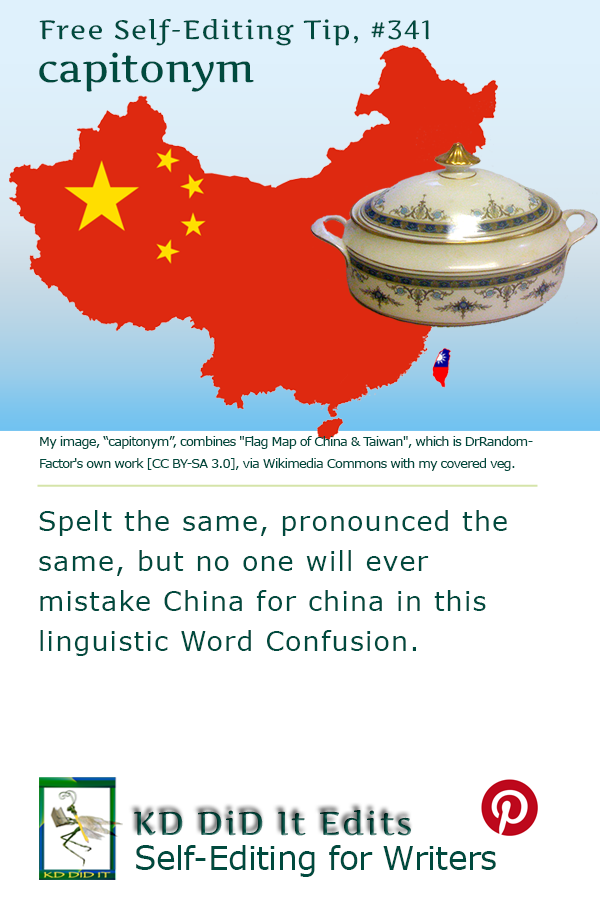
A capitonym is a subgroup under homograph, both of which come under the homonym umbrella. A capitonym appears to be the same word BUT one is capitalized and the other is not. In this Linguistics post from KD Did It.

A monosemic word is a subgroup under homograph, both of which come under the homonym umbrella. A monosemy is one word with ONLY one meaning and sounds the same, obviously!
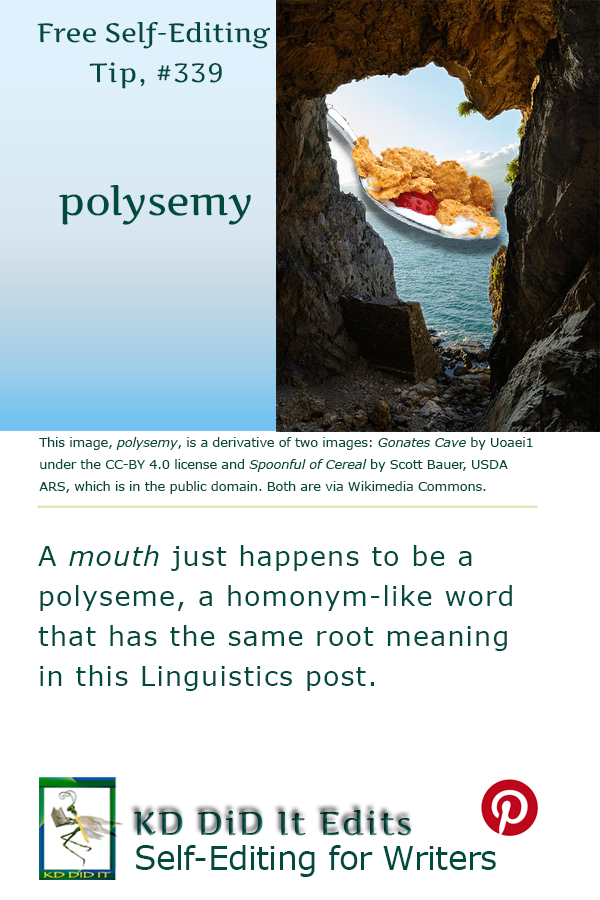
A polysemic word is a subgroup under homograph, both of which come under the homonym umbrella. Polysemies are spelled the same and share the same root word and may or may not sound the same.
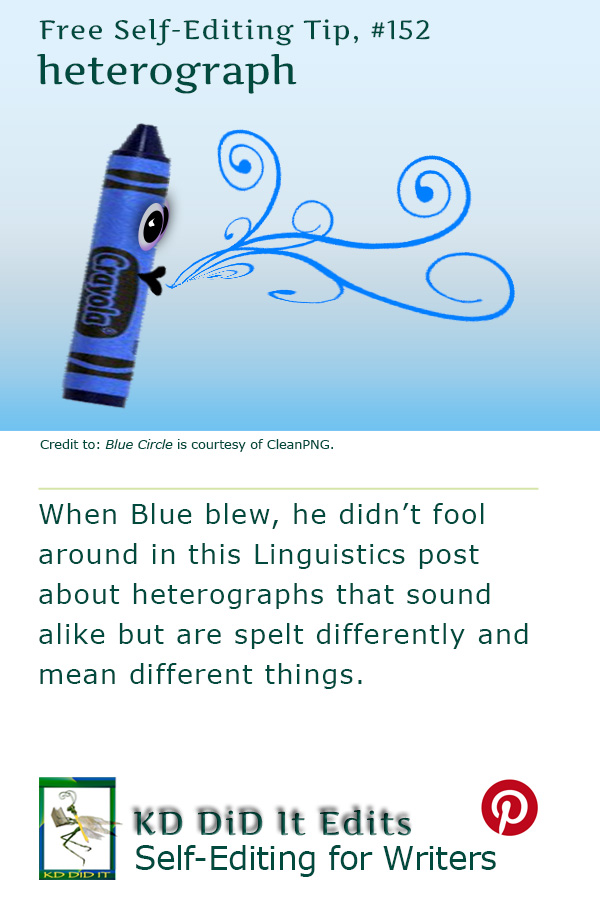
An extremely little-known bit of word play— the heterograph — that is more specific than the homophone in this Linguistics post from KD Did It.
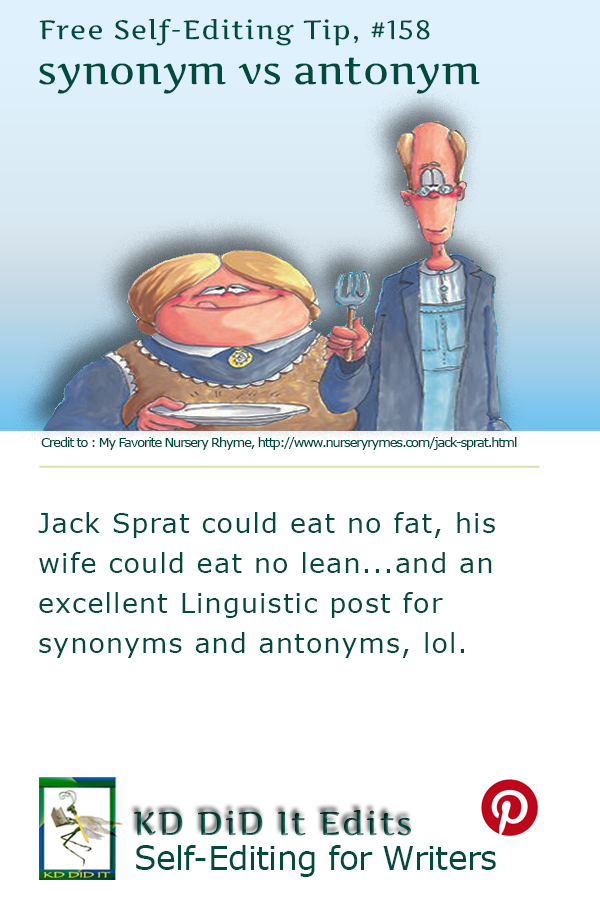
English is so rich and part of that reason are synonyms and antonyms with those shades of meaning, which make your own writing so much richer.
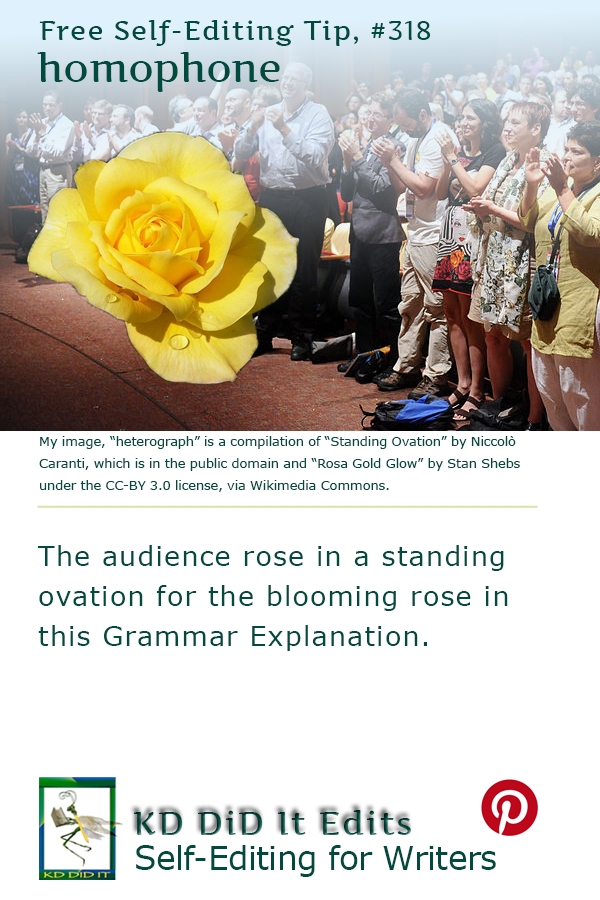
Homophones may sound like but they don’t look alike nor do they have the same meaning in this combination Linguistics and Word Confusion post for self-editing authors.
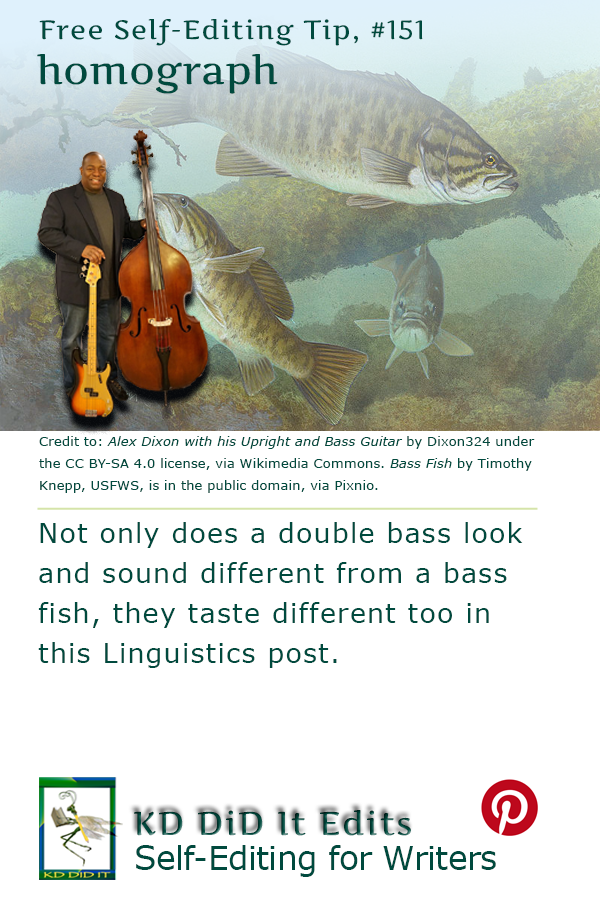
Homographs are spelled the same and sometimes sound the same, but have different meanings or origins in this combination Linguistics and Word Confusion post from KD Did It.
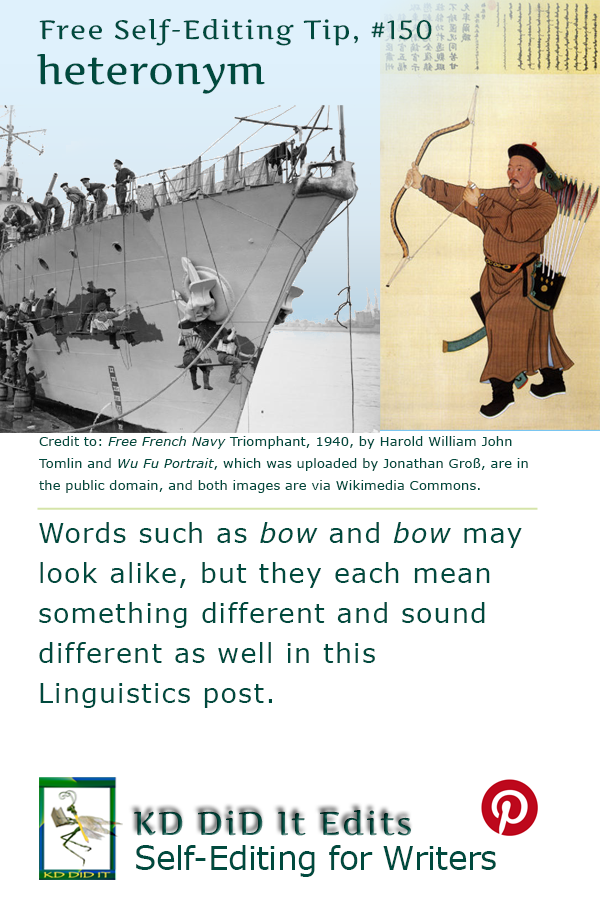
A type of homograph, heteronyms are spelled the same BUT are different in pronunciation and meaning in this Linguistics post from KD Did It.